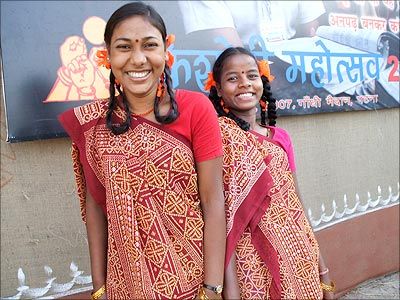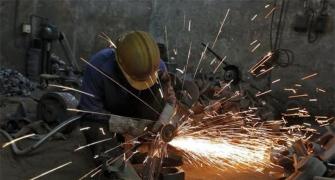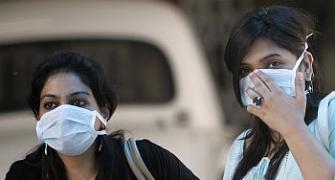Economic Survey points out that the overall level of education in India is below global standards.
There has been a marked improvement in female literacy as per Census 2011.
Though the male literacy is still higher at 80.9 per cent than female literacy at 64.6 per cent, the increase has been 10.9 per cent compared to 5.6 per cent of the males.
The new Scheme Beti Bachao Beti Padhao, for promoting survival protection and education of girl child aims to address the issue of declining figures through a mass campaign targeted at changing social mindset and creating awareness.
The right of Children to Free and Compulsory Education Act 2009 implemented under Sarv Shiksha Abhiyan aimed to increase the quality as well as accessibility of elementary Education in India.
Economic Survey points out that the overall level of education in India is below global standards.
The Programme for International Students Assessment which measures the knowledge and skills of 15 year-olds has rated Tamil Nadu and Himachal Pradesh only higher to other states in the country.
There is a considerable scope for post-secondary education and training system, as well as for places, to improve the proficiency of young People.
The inadequacy of human capital at the base of the pyramid leading to a huge backlog in basic skills put become a big impediment in India’s growth as a result of the changing demography and declining child population.
Budget 2015: Complete Coverage
The Padhe Bharat Badhe Bharat initiative to create a base for reading, writing, and math fluency can be effective if the local administration is fully involved and sensitised in it.
India has about 100 million young people in the age group of 15-18 years, majority of which could land up in unorganized sector as there are educational and age requirement for entry into most vocational skills programmes.
There is a need for research into the type of knowledge or skills required to address this issue.
To build capacity in secondary schools on par with expanded primary enrolments, several schemes like the Mid-Day Meal scheme, Rashtriya Madhyamik Shiksha Abhiyan, Model School Scheme and Saakshar Bharat/Adult Education have also been implemented in the country.
To strengthen the cadre of teacher educators by providing early career choice to prospective teachers and to fill the vacancies in teacher education institutions, a new four-year integrated programme, i.e. BA./Bed, and BSc./Bed. has been introduced.
The Indian higher education system is one of the largest in the world with 713 universities, 36,739 colleges, and 11,343 diploma-level institutions.
To make Higher Education to be futuristic envision areas that will generate future employment opportunities, there is a need to match the supply with demand and dovetail education policy to employment opportunities.
Text: Kind courtesy, PIB; Image: A file photo of Dhanvarti and Prabha, schoolgirls from Bihar. Photograph: Archana Masih/Rediff.com









